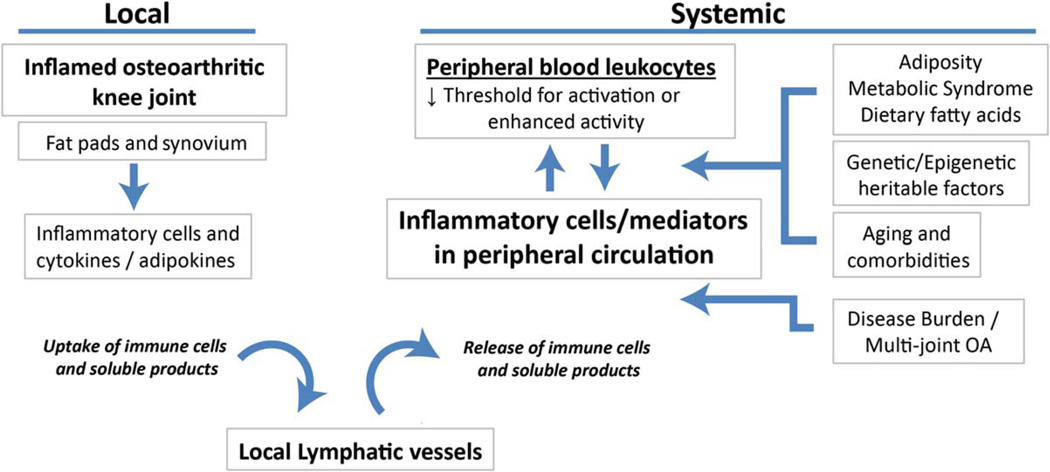Figure 1.
Local and systemic factors that could contribute to systemic measures of inflammation in knee osteoarthritis (OA). Inflammatory cells infiltrate the synovial tissues and fat pads of the osteoarthritic joint to a variable extent. Infiltrating cells become activated locally by inflammatory cytokines and adipokines within the joint. These cells, as well as soluble products such as cytokines, can be taken up by local lymphatic vessels within the joint, where they eventually may traffic back to the peripheral circulation and be detected peripherally. A number of systemic factors may have an effect on the behavior of the peripheral blood leukocyte pool. These include adiposity/metabolic syndrome through the effects of soluble adipokines and lipid mediators, genetic or epigenetic heritable effects on cellular activation, and biologically active molecules released from the joint that become systemic from increased disease burden in patients with multiple joints affected by arthritis. Additionally, the impact of aging and comorbidities, as well as dietary fatty acids, on peripheral blood leukocyte activity should be considered.

